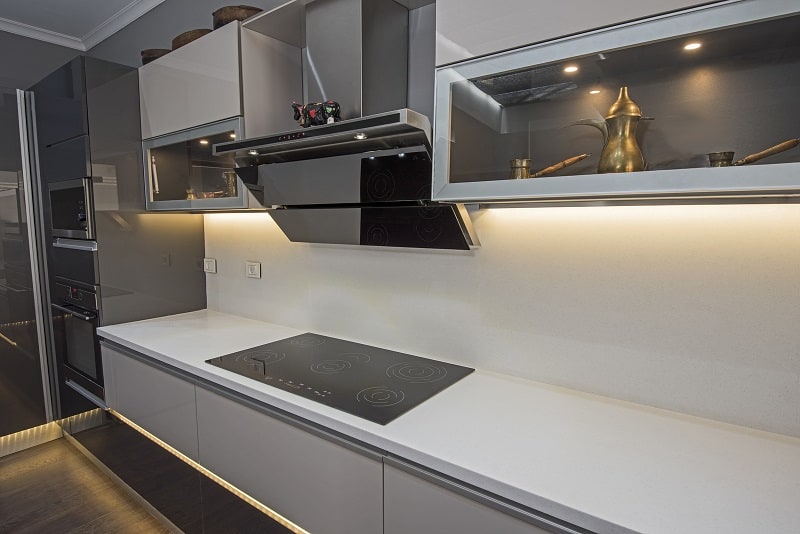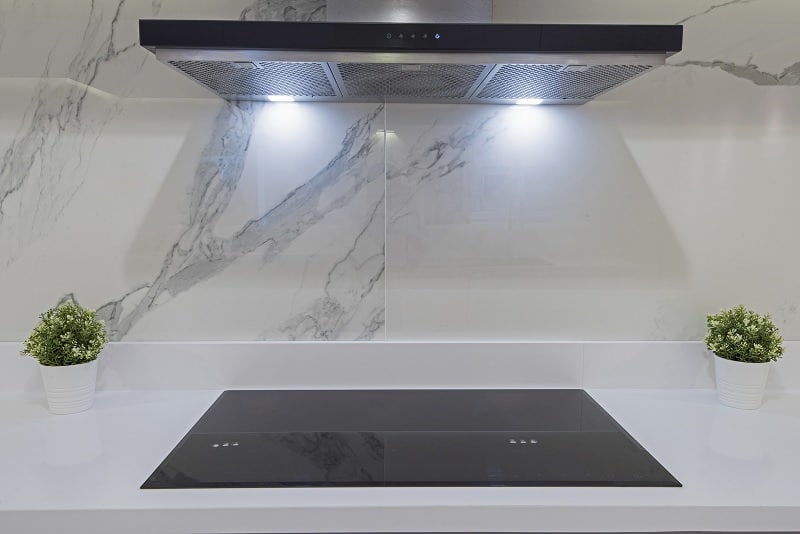If you’re interested in buying an induction hob, we’re sure you have many questions.
We’ve covered induction hobs a lot on Chef’s Pick in the past, but we have never looked at whether or not you need an extractor fan with these hobs. So, let’s do that, shall we?
Do I Need an Extractor Fan Above an Induction Hob?
Strictly speaking, you don’t need an extractor fan over an induction hob or any other hob, actually. However, an extractor fan is a fantastic way of getting rid of smells, smoke and steam while cooking.
You can buy induction hobs with built-in extractors as well. So, if you don’t like the look of extractor fans, this is a good option.
These induction hobs are called downdraft hoods and have the fan built directly into the unit, sometimes in the front or in the middle. They work by sucking up the air as you cook, just like an overhead extraction fan does, and can either take the air outside or recirculate it back into the kitchen.
Are Extractor Fans a Legal Requirement?
Here’s where extractor fans get a bit confusing. If you have a kitchen that was built after 2006, building regulations state that you must have an extraction fan in the kitchen. And that extraction fan must take the air outside and not recirculate it.
However, if your kitchen was built before 2006 and you don’t already have an extractor fan, you don’t need to add one. Our understanding is that if you were to replace your current hob with a new induction hob, you wouldn’t need to install an extractor fan if you don’t already have one. We have covered this in more detail in in our article on cooker hood ducting regulations.

Are Induction Hobs with Built-In Extractor Fans Worth It?
Induction hobs with built-in extraction look really cool and sleek. However, they can cause some issues.
Many people buy these induction hobs because they want the hob on an island in the middle of the kitchen as a central feature. And they don’t really want a big extraction fan hanging from the centre of the kitchen.
But installing an induction hob with built-in extraction is really difficult unless you are building the entire kitchen. This is because the extraction fan needs to extract the air, steam and smells outside, so you need to dig a channel in the kitchen floor and lay some pipe from the underneath of where the hob is going to go to the outside.
If you already have your kitchen built, you can see the issue. Do you dig up your kitchen floor for a swanky new induction hob with fancy extraction?
Or do you make do with a much easier to install extractor hood? After all, the extractor hood pipes are run through the ceiling of the kitchen.
This may involve pulling up a floorboard or two above the kitchen, but it is much less destructive than digging up the floor of your home.
If you live in a flat or apartment, one of these induction hobs with an extractor fan built-in could cause all kinds of problems for you and your neighbours. In this case, it’s best to stick with a hood.
If you have floorboards in your kitchen, you likely have space for the ventilation pipe to run outdoors without needing to dig any of the flooring up.
It may be worth getting an induction hob that does have a ventilation system built in, in this case. However, there aren’t many induction hobs with built-in extraction, so expect to pay high-end prices for this type of hob.
In Conclusion
You don’t need an extractor fan above your induction hob. Unless your kitchen was built after 2006, then it is a building regulation to have one installed that extracts outside.
Induction hobs with built-in extraction can be worth it if you really don’t like the look of extraction hoods and are willing to pay for a high-end hob, and potentially pay for your concrete kitchen floor to be dug up.
We hope this look at induction hobs and extraction fans has been helpful. For more advice about induction hobs, please explore Chef’s Pick further. We have the best induction hobs and cookware to use on these amazing hobs right here.

Scott is a writer and a passionate home chef. His passion for cooking began when he was 10 years old. Scott has been writing professionally for over five years now and loves to combine his passion for cooking with his day job.







